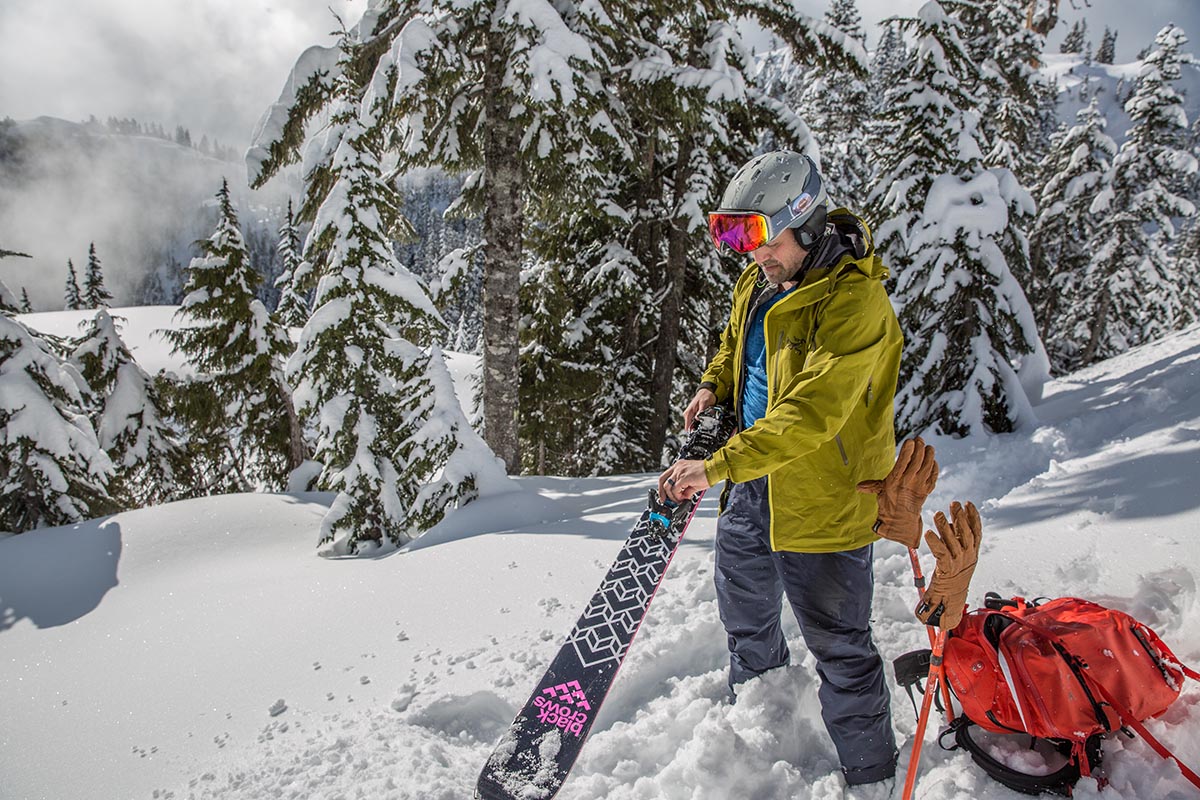
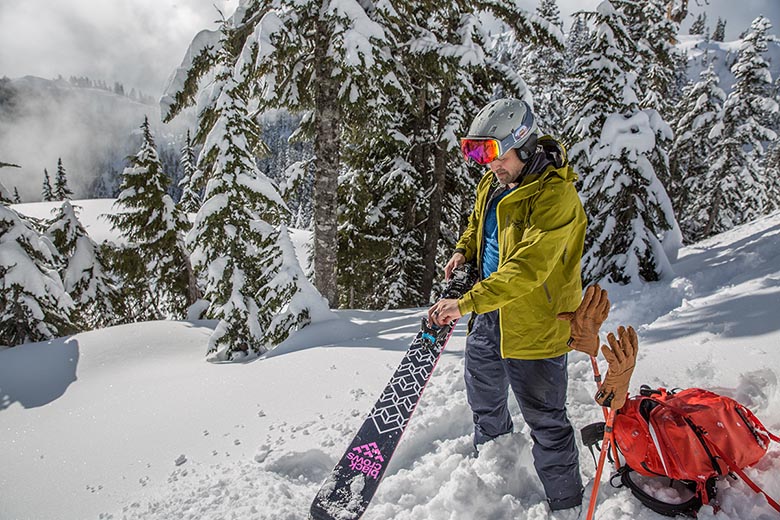
Price: $600
DIN: 6-13
Weight per pair: 3 lbs. 14.4 oz.
What we like: A truly impressive all-in-one design for resort and backcountry skiing.
What we don’t: Not a leader in weight and the transitioning process takes some time to master.
See the Salomon S/Lab Shift MNC 13
Most ski bindings fall into either the downhill or alpine touring category, but the Salomon S/Lab Shift MNC is a do-it-all set-up that can confidently transition between the front- and backcountry. In short, it combines the safety and convenience of a downhill binding with the uphill capability of a tech design. The two-mode toe piece and beefy heel do add a little weight, but it’s a great match for those who like to hit big lines or split their time between lift-assisted and touring days. Below we break down our experiences with the Shift. To see how it stacks up to the competition, see our articles on the best ski bindings and best backcountry ski bindings.
The Salomon S/Lab Shift MNC was the first of its kind: a backcountry (tech) binding that converts into a traditional downhill setup in ski mode. Given the hybrid intent, it’s important to first discuss boot compatibility, which is a bit nuanced but crucial for ensuring a proper release. The Shift is an MNC (Multi-Norm Certified) binding, meaning it can fit a variety of ski boots and sole types. This includes standard alpine models (ISO 5355) like the Tecnica Mach1 130, backcountry designs (ISO 9523) like the Scarpa Maestrale RS, Walk to Ride (WTR) soles, and GripWalk boots.
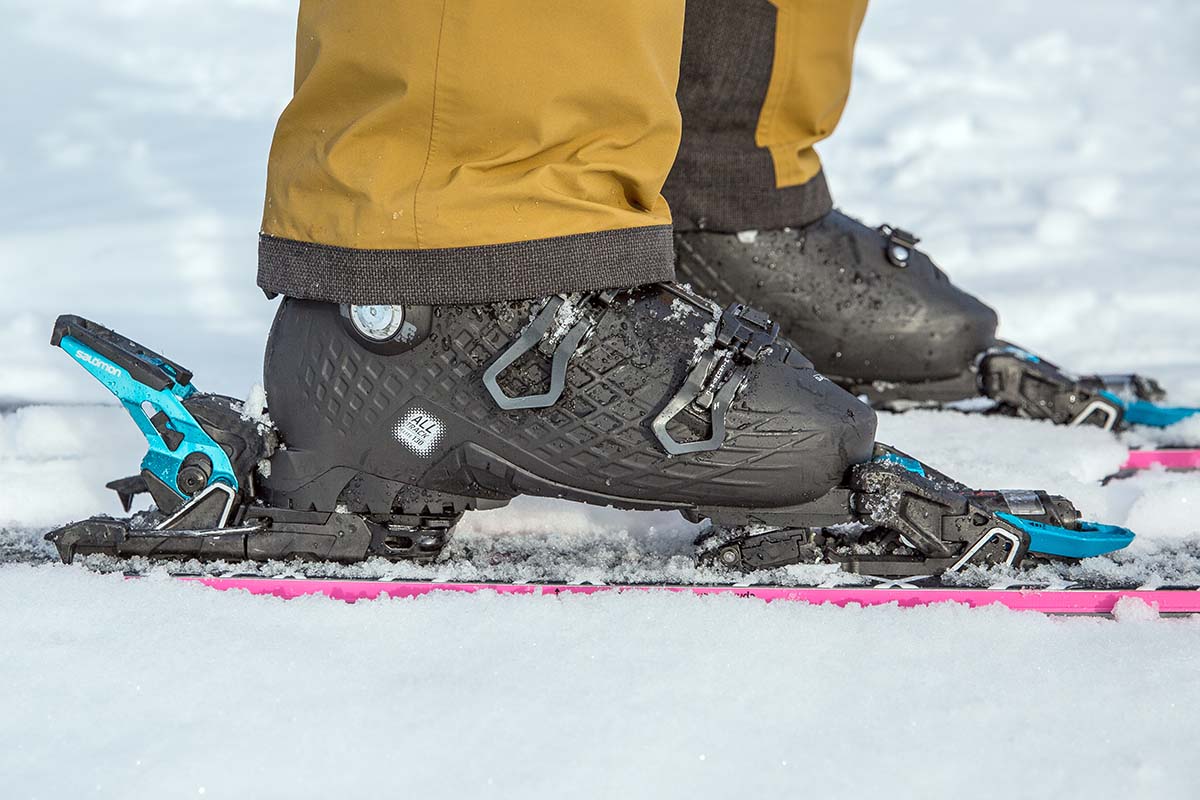
For touring use, the Shift requires a boot with tech toe fittings, which are small holes at each side of the toe that lock into the binding’s front pins and allow the heel to move freely when walking uphill. If you anticipate only using the binding at the resort, any “normed” boot with full-sized heel and toe lugs will suffice (this encompasses most modern freeride designs). Importantly, models without both heel and toe lugs—or those with shorter lugs—won’t work, which is more common among ski mountaineering and racing-focused options. The toe piece is also height-adjustable to accommodate different norms, and lengthwise, the Shift has a 30-millimeter adjustment range to fit a wide variety of boot sole lengths. All told, the Salomon Shift is one of the most versatile ski bindings on the market for backcountry skiers, resort-goers, and those who like to split their time between the two disciplines.
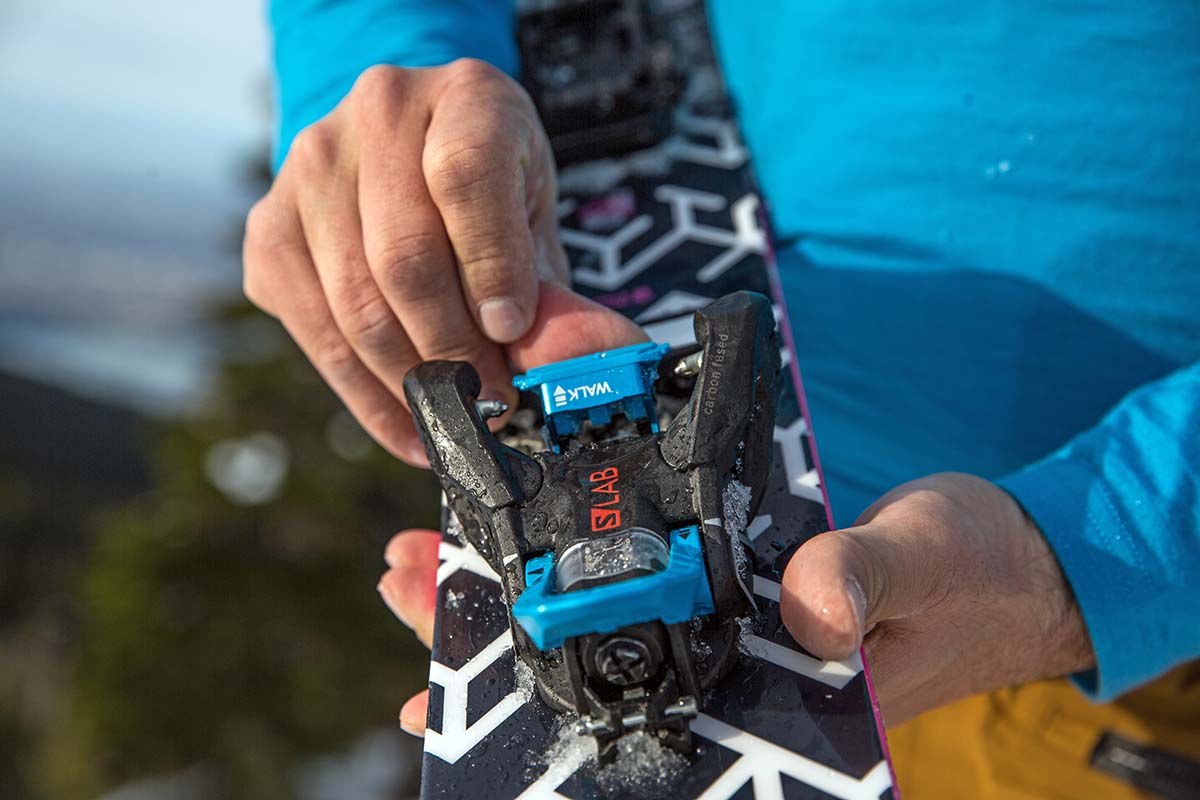
With its nearly 4-pound weight and single climbing aid, the Salomon Shift binding might not seem like a great climber on paper. But in practice, it’s been surprisingly capable on the skin track. For starters, the Shift uses traditional tech toe inserts in walk mode, which allow for natural range of motion and excellent mobility for kick turns and climbing wandering routes. And although it only features one climbing bar at 10 degrees (in addition to the natural lift at 2 degrees), I haven’t found this to be too limiting. If I’m on an especially steep slope where I need additional leverage, I simply cut more switchbacks. I’ve completed multiple full-day tours in the Mount Baker Wilderness with no shortage of ascending and didn’t think twice about the binding, which is high praise. All in all, the Shift has proven itself as a capable uphill companion in conditions ranging from icy crud to deep, fresh powder.
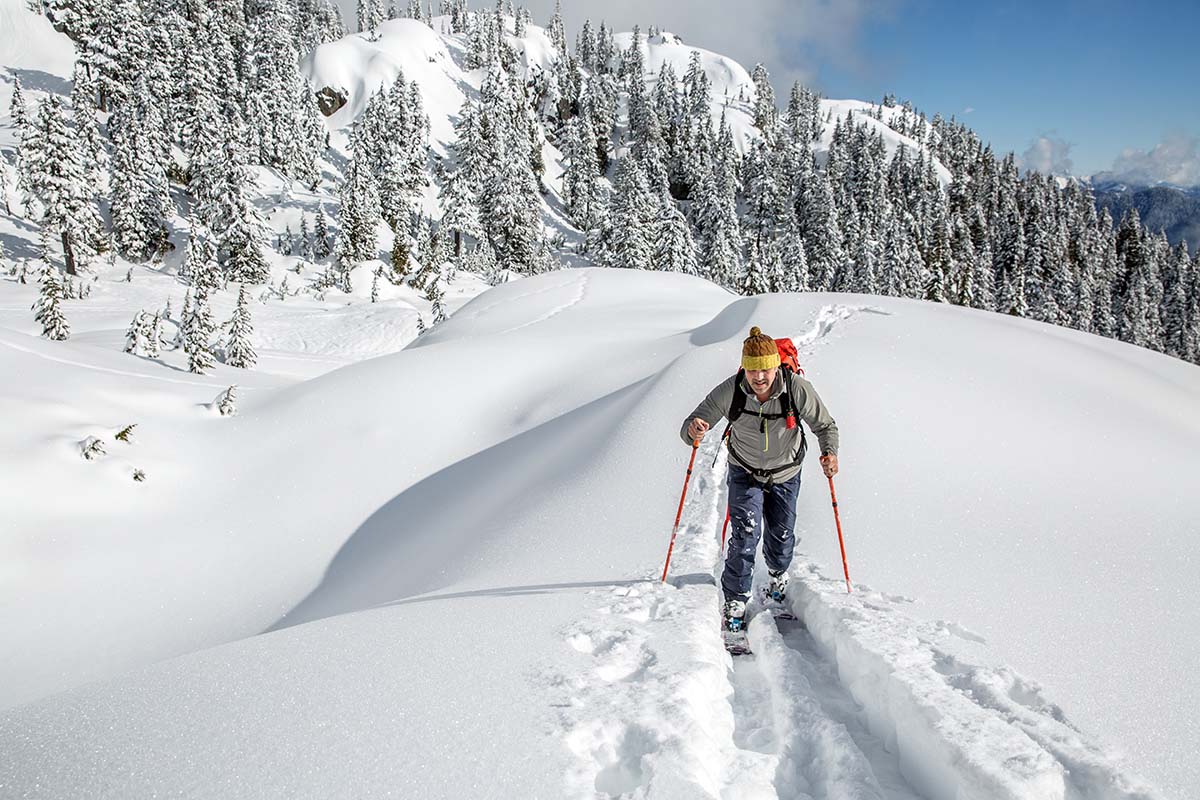
That being said, my biggest complaint about the Shift’s uphill performance is that the locking brake lever at the heel can pop up occasionally, releasing the brakes while skinning. Though slightly annoying, this release thankfully doesn’t lock the boot into ski mode, which can be an issue with rotating heel designs like the G3 Ion and Dynafit ST Rotation. However, if you ignore the problem, snow can build up underneath, making it difficult to push the lever back down into place. If this happens, you’ll have to remove the ski and thoroughly clean out the heel. My best advice is to pay close attention and address the problem before reaching that point (we’ve found it helpful to preemptively and frequently clean out the binding with a ski pole in deep powder).
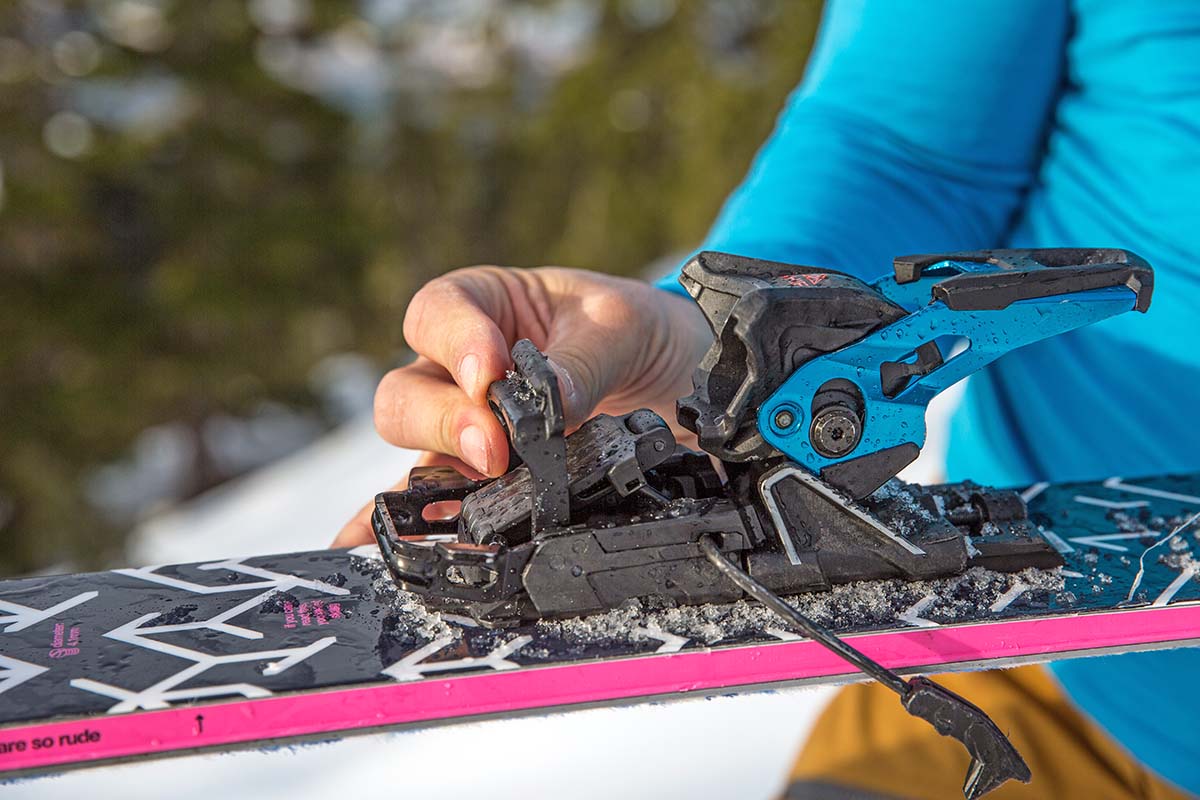
I typically use traditional tech bindings, which aren’t very powerful or secure when bombing down groomers, but the Shift 13’s stability and responsiveness have been game-changing. As I touched on above, Salomon accomplishes this with the unique toe piece, which functions like a tech set-up for the uphill but converts into a fully certified, 13-DIN alpine binding in ski mode. I’ve had no issues with the binding releasing prematurely, and my ski boot has come out on impact each time I’ve crashed. The toe piece also offers 47 millimeters of lateral elasticity (many standard tech bindings offer none), while contributes to the consistent release. In addition, the binding’s low standing height keeps me close to the ski, which increases overall responsiveness and power transmission.
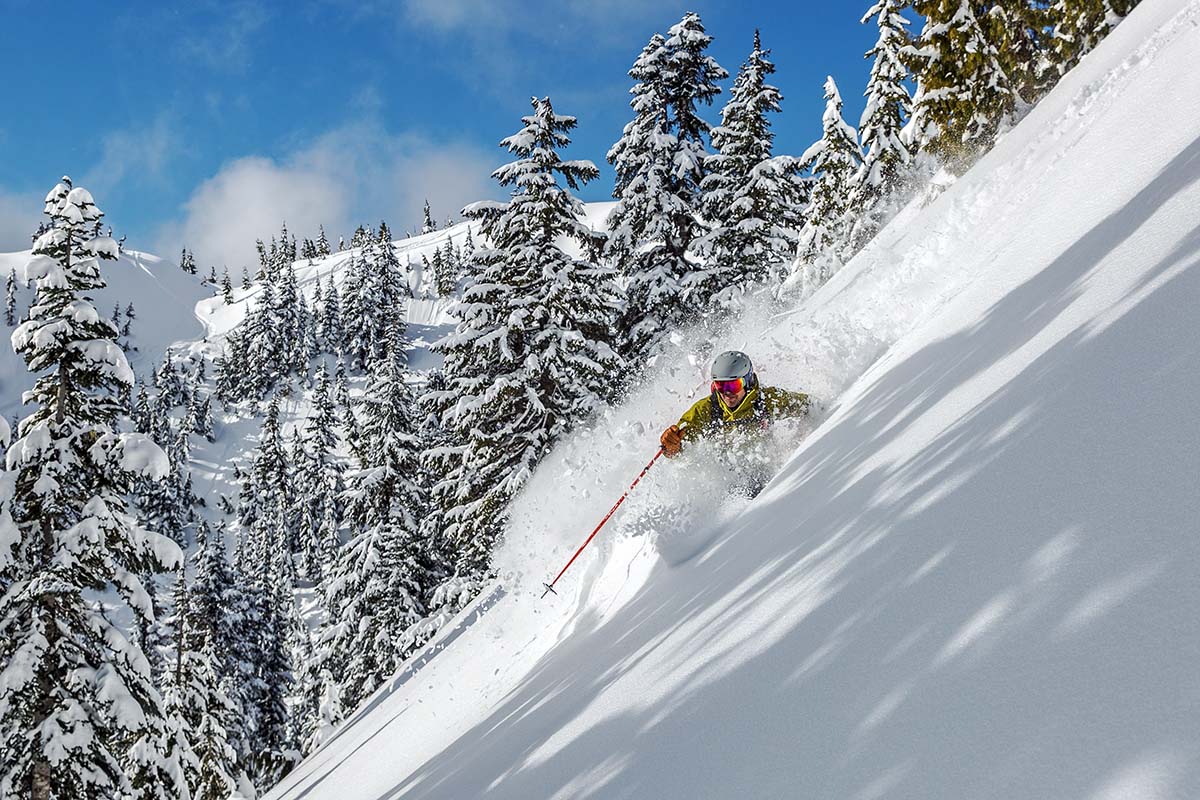
Paired with my 107-millimeter Black Crows Corvus skis and Rossignol Alltrack Elite 130 boots, I have a versatile set-up that can charge groomers with confidence, slash and smear through tight glades, carve and plow through skied-out, choppy snow, and still conquer steep skin tracks—a very tall order that not many bindings are able to accomplish. The oversized toe platform is a big help here and helps promote better energy transfer, especially when pushing wider planks like my Corvus. In fact, I’d even consider mounting the Shift on a wider-waisted, dedicated powder ski for tackling bigger lines.
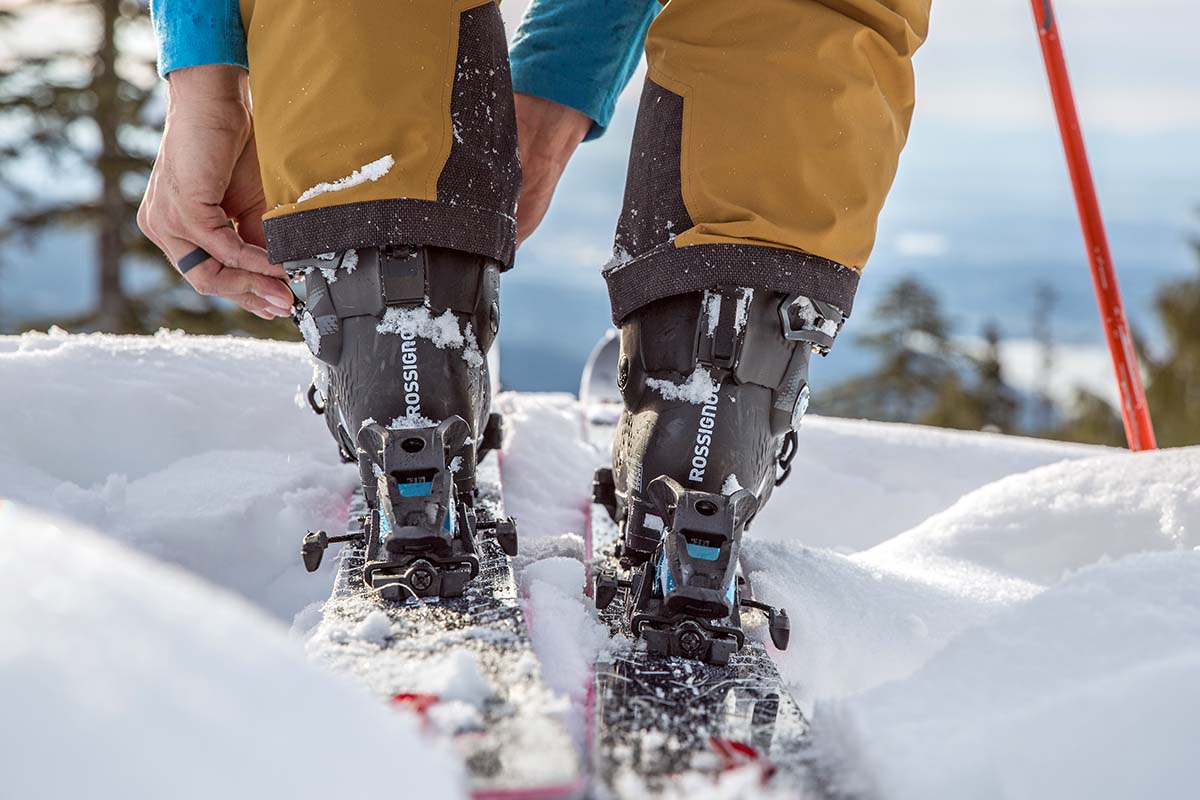
Put simply, transitioning in the Shift MNC takes some getting used to. With a few more steps than most traditional tech bindings, it required a few trials to sort out what initially felt like a complicated process, particularly from walk to ski mode. To switch into walk mode, start by pushing the front walk/ride switch down, which expands the toe pins. Next, press the toe lever with a ski pole, align your boot, release the lever to clamp the pins into your boot’s tech fittings, and pull up to lock in. To engage the heel, raise the locking brake lever back, which puts your foot at a 2-degree angle. For especially steep slopes, simply flip up the 10-degree climbing aid using your ski pole. With practice, the process has become quite easy and doesn’t require much additional time compared to standard tech set-ups, but it’s not the most intuitive when starting out.
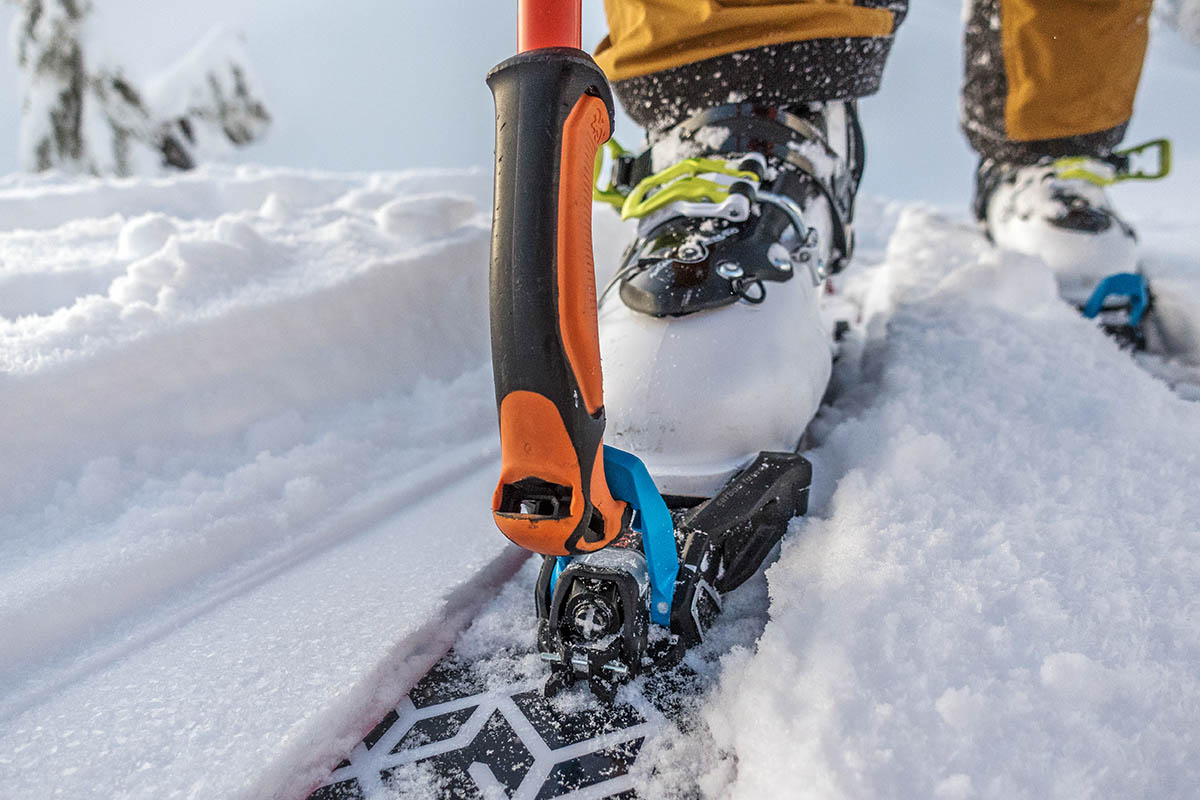
To covert the binding to ski mode, it’s a matter of reversing the above process: Step out of the toe piece, switch the walk/ride lever into ski mode (you’ll feel it click), and push the toe lever down toward the ski. Rather than rotate the heel to transition, simply press the locking brake lever back down—this disengages the brakes, dropping them to the sides. Once the binding is in ski mode, you can step into it as you would a standard alpine design.
Despite the transition process being relatively simple after some practice, there are some intricacies to be aware of when switching between modes. First and arguably most importantly, the Shift requires you to hold the lever open while aligning your boot for touring—some others, including the G3 Ion, lock open while you slip your foot in—which makes entering the binding on off-camber slopes a bit tricky. Second, both the locking brake lever at the heel and walk/ride lever at the toe can pinch your fingers when released, so it’s important to be careful when transitioning. And finally, make sure to have the proper sole height set before heading out. Halfway through a run, I felt some play in the front of the Shift and quickly realized that there was a little space between the binding and my boot (I had switched boots without adjusting the height). It’s an easy fix, but one that can be dangerous if overlooked.
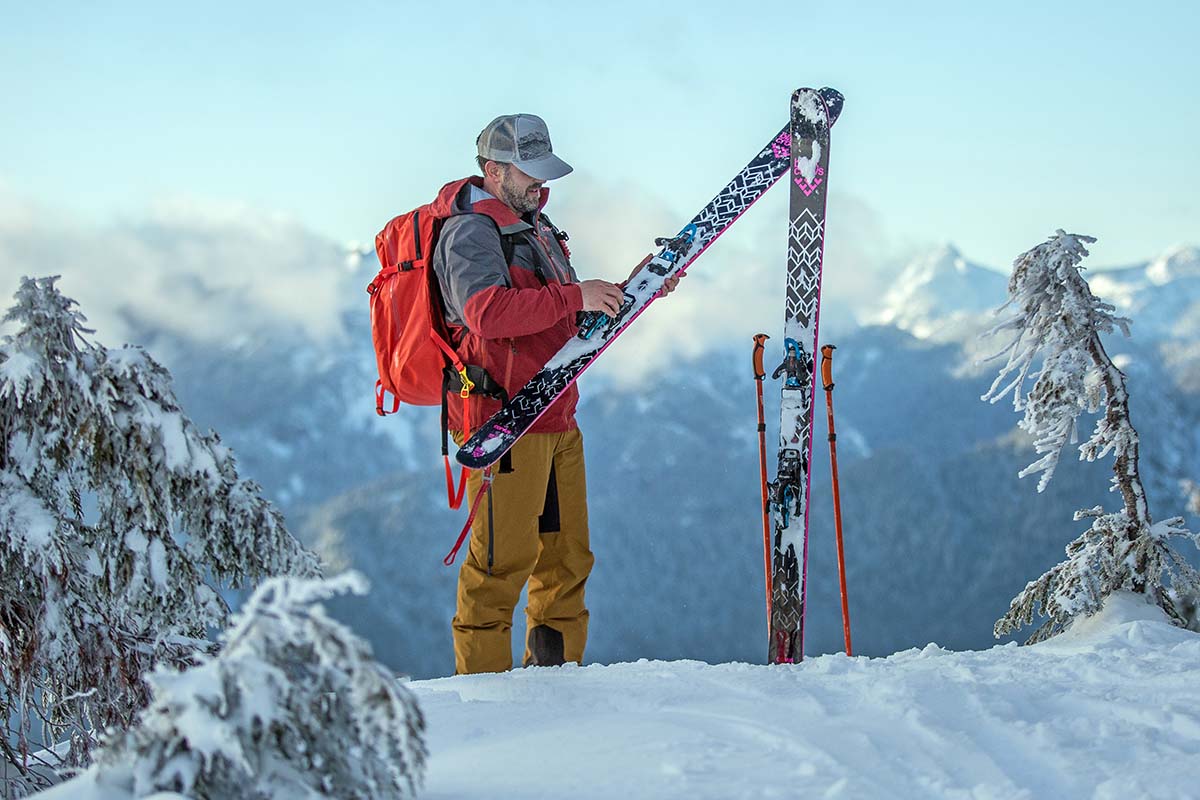
The Shift 13’s 3-pound-14.4-ounce weight reflects its hybrid intent: It’s much lighter than traditional alpine bindings but outweighs most tech setups. For comparison, standard backcountry bindings like the G3 Ion 12 (2 lbs. 8.8 oz.) and Salomon’s own MTN Pure (1 lb. 4.8 oz. without brakes and 1 lb. 11.5 oz. with them) undercut the Shift considerably. Closer competitors like the Marker Kingpin 13 (3 lbs. 2.4 oz.) and Fritschi Tecton 13 (2 lbs. 6 oz. without brakes) also weigh less and are equipped with an alpine heel, but they lack the overall security and power of the two-mode toe piece on the Salomon. Marker’s Duke PT 12 features a similar alpine/tech toe design and alpine heel that’s a great match for mixed resort and backcountry use, although, with the alpine toe attached, it comes in more than a pound heavier at 5 pounds 1.1 ounces per pair.

All things considered, the Shift’s weight is perfectly reasonable given its construction, but it’s not a great fit for everyone. Dedicated backcountry-goers who like to travel light and fast or ski mountaineers focused on rapid ascents will be better off with a model like the aforementioned Salomon MTN or a true minimalist design like the Dynafit TLT Expedition (13.7 oz.). However, for skiers that put a premium on downhill performance—both in the backcountry and at the resort—the Shift offers a notable boost in security and is worth the weight penalty, in my opinion.
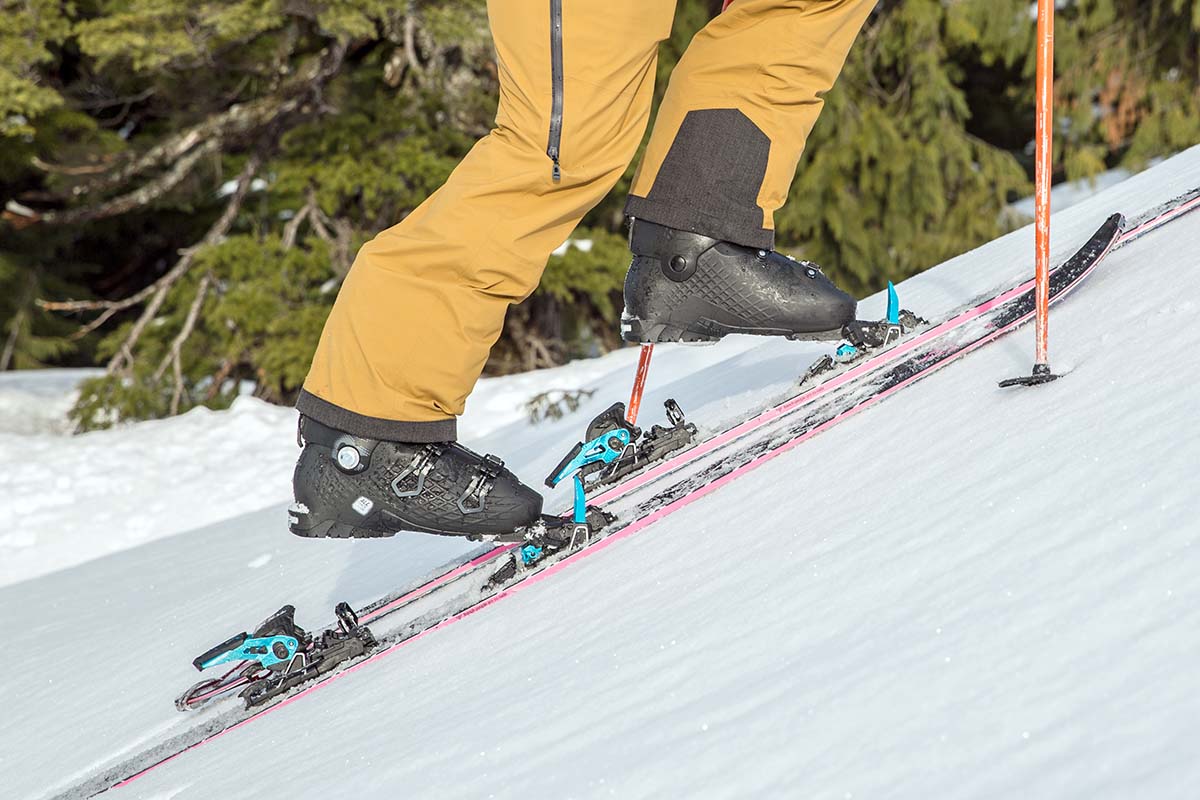
Salomon is known for creating high-quality gear, and the Shift is no exception. After three and a half months of aggressive use, I’ve come away with mostly high praise. In terms of construction, the carbon-infused plastic body is reasonably light but noticeably hardwearing—this is one of few ski bindings that I haven’t broken. Further, I’ve experienced no early-release problems in either the heel or toe, and all springs and moving parts are working flawlessly with no signs of wear. As I covered above, the brake can occasionally pop open in climbing mode, but it’s a fairly rare occurrence and an easy fix (provided you catch it before snow starts to accumulate). All in all, there are often some kinks to work out with new technology—especially in alpine touring gear—but the Shift has impressed in this regard.
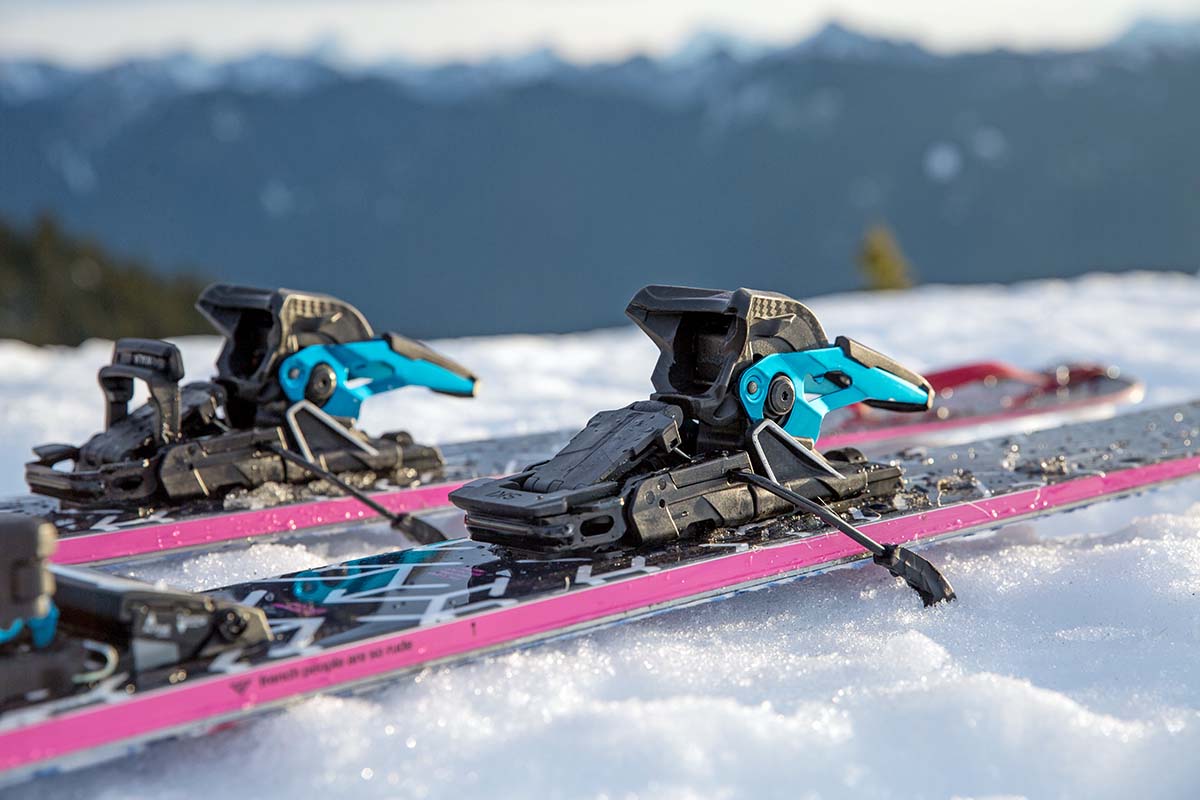
In addition to the MNC 13 model of the Shift that we tested for this review (DIN 6-13), Salomon also makes the binding in a $50-cheaper MNC 10 version with a DIN range of 4-10. We consider this a good alternative for lighter or less aggressive skiers who don’t need the all-out power and security of the beefier, 13-DIN variation. All other features remain the same, including the wide range of boot compatibility, alpine heel, and unique two-mode toe piece, although weight does go down slightly (the Shift MNC 10 clocks in at 3 lbs. 13.7 oz.). Finally, the Shift is also sold under the Armada and Atomic brand names (all three are part of the Amer Sports group), with the only difference being color.
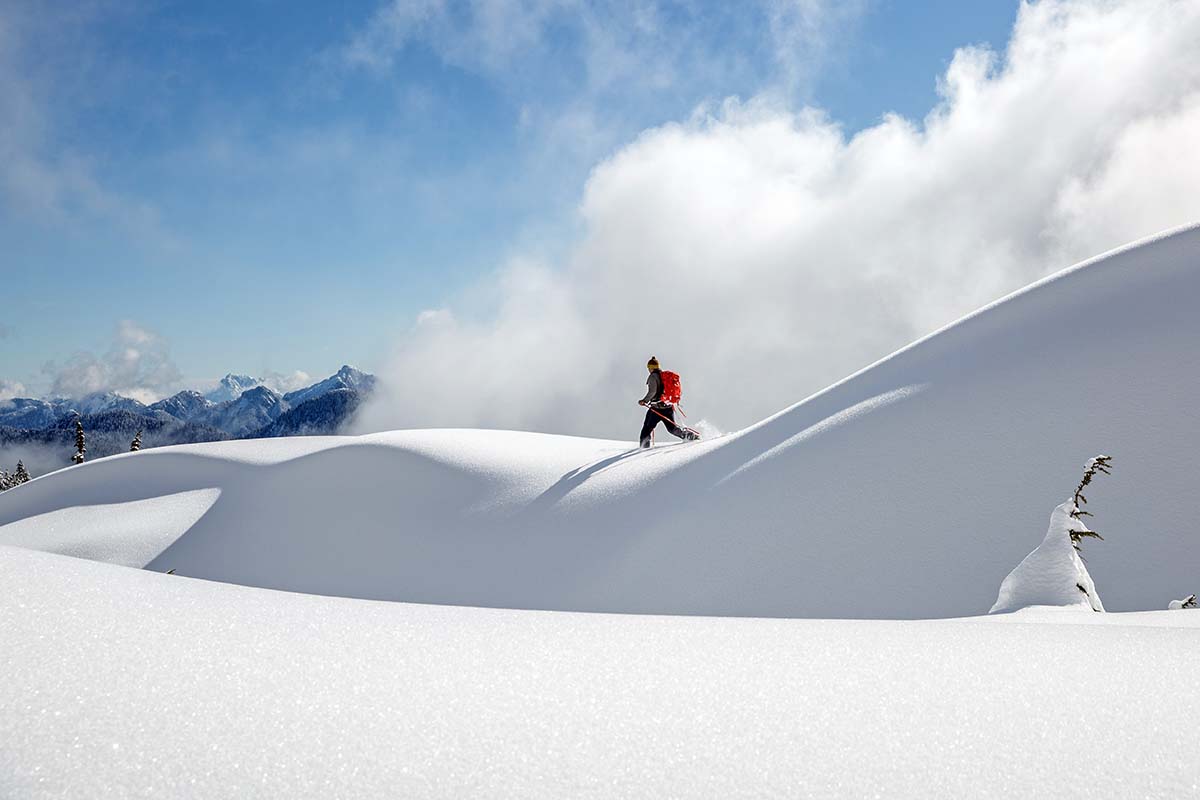
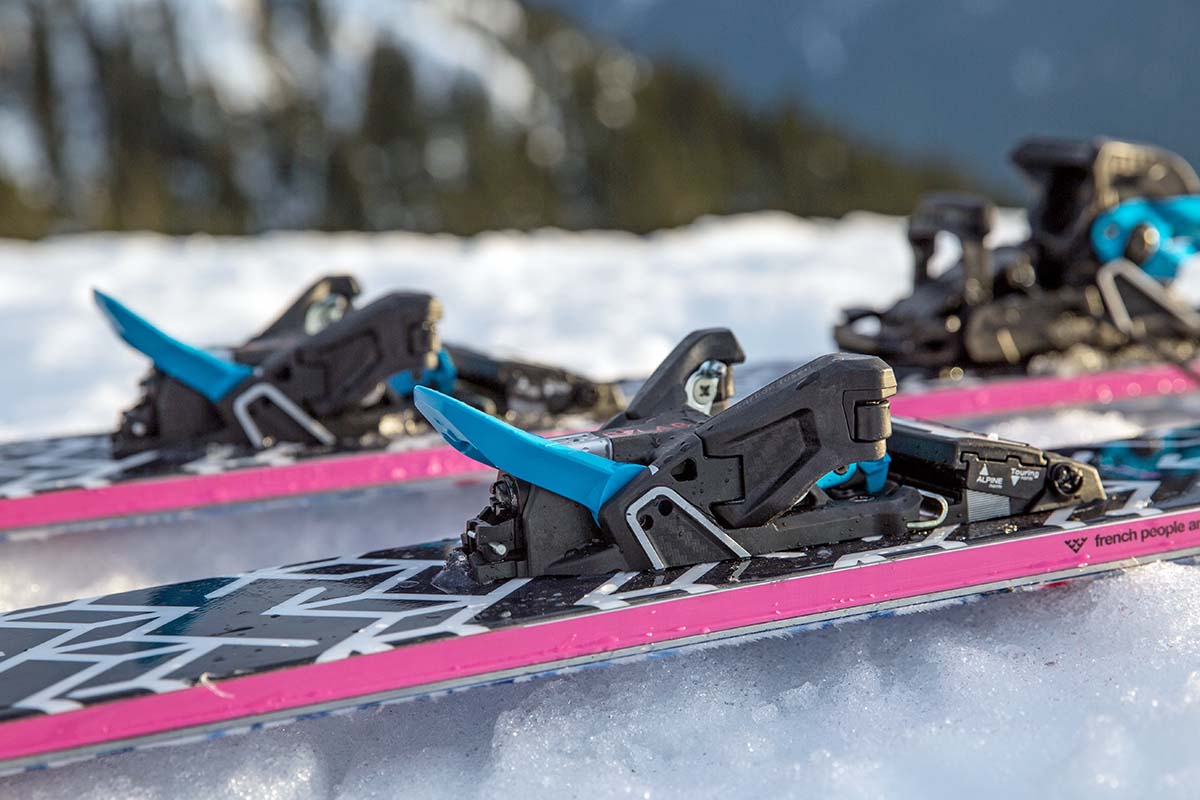
| Binding | PRICE | Type | Release | Weight | Brake Sizes |
|---|---|---|---|---|---|
| Salomon S/Lab Shift MNC 13 | $600 | Tech/alpine | 6-13 | 3 lbs. 14.4 oz. | 90, 100, 110, 120mm |
| Marker Duke PT 12 | $600 | Tech/alpine | 4-12 | 5 lbs. 1.1 oz. | 100, 125mm |
| Marker Kingpin 13 | $700 | Tech | 6-13 | 3 lbs. 2.4 oz. | 75-100, 100-125mm |
| Fritschi Tecton 13 | $680 | Tech | 5-13 | 2 lbs. 6 oz. | 90, 100, 110, 120mm |
| G3 Ion 12 | $645 | Tech | 5-12 | 2 lbs. 8.8 oz. | 85, 100, 115, 130mm |
| Marker Baron EPF 13 | $500 | Tech | 4-13 | 6 lbs. 3.1 oz. | 110mm |
Salomon put a full seven years of R&D into the Shift, and it immediately jumped to the top of the backcountry binding market at its release. In terms of competitors, the closest alternative is Marker’s Duke PT 12, which was released a couple seasons ago and features a convertible toe similar to the Salomon’s. The key difference here is removability: When skinning up, you can take off the top of the Duke’s toe piece and stuff it in your pack, which shaves around 10.5 ounces per foot. On the downhill, simply reconnect the alpine and tech components and lock in like you would with a traditional downhill binding. Security and compatibility are similar between the two designs, although the Marker features a helpful anti-ice rail to scratch off ice and snow that accumulate below your boot’s sole (an issue we had with the Salomon). That said, the Marker is over a pound heavier per pair (with the alpine toe attached), and the transition process is a bit more complex. For the same price, we think the Salomon is a bit more dialed.
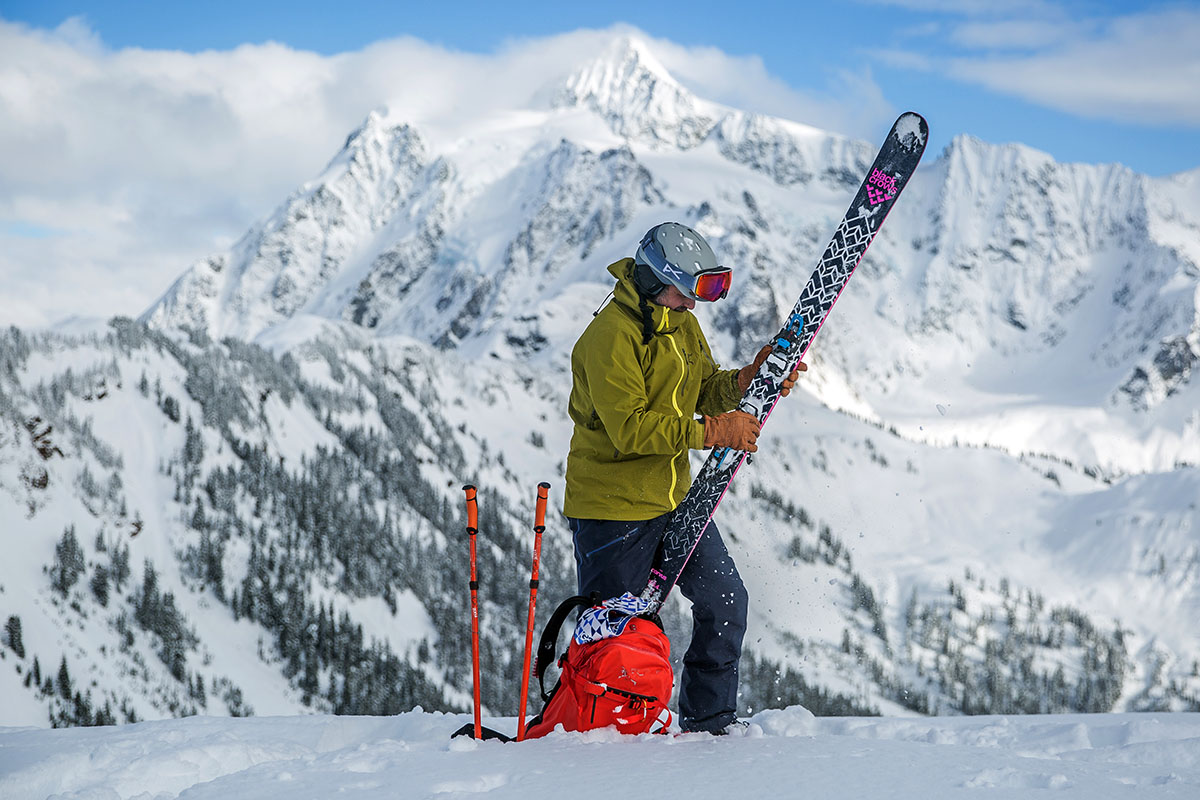
Another option to consider from Marker is their Kingpin 13, which was updated a couple seasons back with a toe piece that’s lighter and more secure. Like the Shift, the Kingpin is a great downhill companion due to its alpine heel, and it’s considerably lighter at 3 pounds 2.4 ounces (around 12 oz. less than the Shift). That said, the Kingpin lacks the unique two-mode toe piece of the Shift in favor of a traditional pin design, which translates to less versatility for resort use. All in all, the Marker is a nice option for dedicated backcountry-goers who want a strong set-up and reliable release, but the Salomon is the better choice for 50/50 backcountry and lift-assisted riding.
Black Diamond makes a similar design to the Kingpin in the Fritschi Tecton 13. Like the Marker, the BD has a tech fit toe and alpine-style heel piece, giving it a solid and stable feel on the downhill. However, the Tecton is the lightest of the bunch at 2 pounds 6 ounces (without brakes), which undercuts the Shift by a considerable 1 pound 8.4 ounces. In addition, you get another climbing aid for ascending steep slopes and similar 13-DIN rating. On the other hand, like the Kingpin, you miss out on the prized boot compatibility for both resort and backcountry riding, plus the Tecton costs $80 more. Backcountry skiers aimed at traveling fast and light but still wanting a secure build with a smooth release (both the heel and toe have lateral elasticity) will likely prefer the Fritschi, but the Salomon is the better all-rounder.
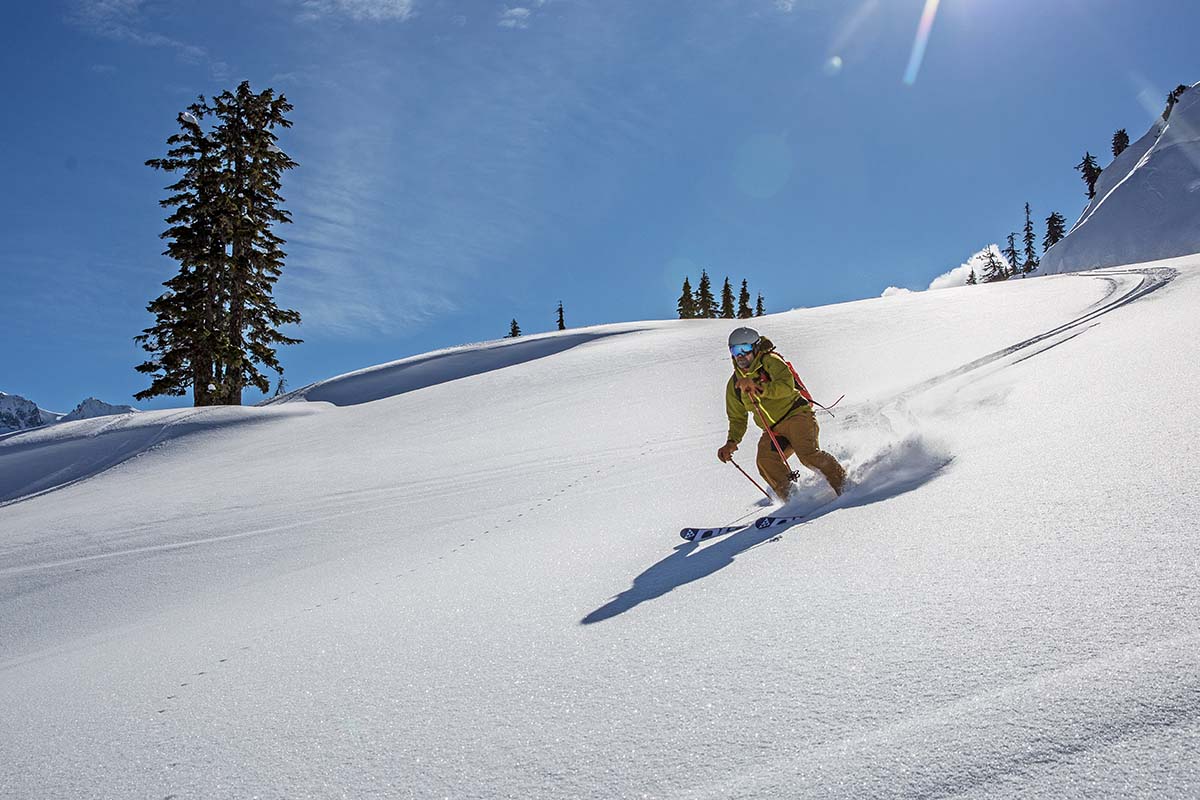
Stepping out of the alpine heel/tech toe world is the light and user-friendly G3 Ion 12. This binding excels on the uphill with a well-rounded feature set: The toe is easy to secure and keep clean, the two climbing aids allow you to adjust the height based on steepness, and it’s among the simplest we’ve tested to transition between walk and ski modes. The G3 is also more than a pound lighter than the Salomon. But it can’t match the Shift’s downhill performance—it felt quite a bit more skittish on firm snow and wasn’t as easy to drive in deep powder. In the end, we’d throw the G3 on our dedicated backcountry set-up, but the Shift’s one-quiver versatility makes it the better option for the majority of skiers out there.
The final competitor is a throwback: Marker’s Baron EPF 13. Right off the bat, the touring performance with this binding can’t come close to matching the Shift: It’s significantly heavier at over 6 pounds for the pair, and the frame-style setup is clunky and harder to pivot while climbing. But on the downhill, it’s a proper alpine design that matches up very nicely with the Salomon in security and power transfer. And at $500, it gets the clear advantage in price. Skiers planning to only hit the skin track for short trips, wanting a solid sidecountry option, or hoping to get a backcountry kit on the cheap will find the Baron to be serviceable, but it can’t come close to matching the uphill performance of the impressive Shift.